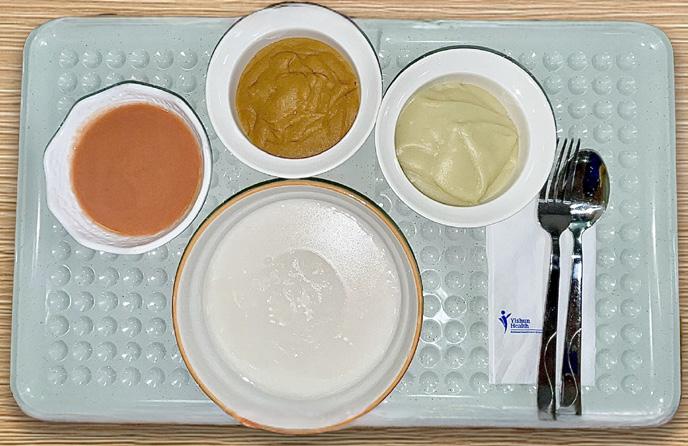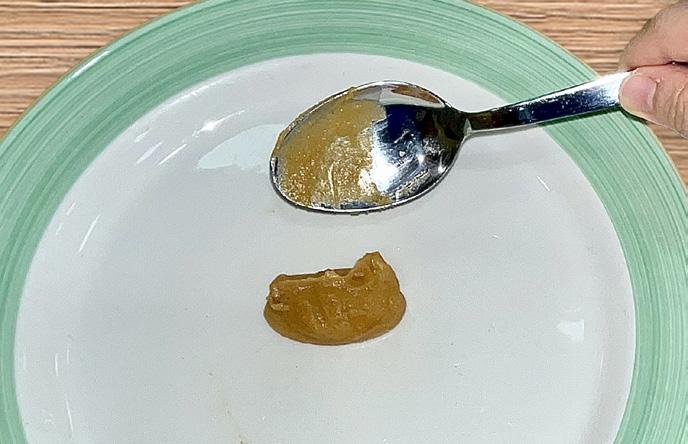Modified Diet Textures
A Preparation Guide
You or your loved one may have been prescribed an ‘easy to chew’, ‘soft and bite-sized’, ‘minced and moist’ or ‘pureed’ textured diet after seeing a Speech Therapist.
In this guide, we have provided a description of the various modified diet textures (using The IDDSI – International Dysphagia Diet Standardisation Initiative terminology) and simple instructions for preparing them.
Level 7 Easy to Chew Diet

What are easy to chew diet items?
• Soft texture (no crunchy, fibrous, chewy, hard foods)
• Easily broken up with the side of a fork or spoon
• Require some chewing
• Can be of any size
How to prepare?
• Cook all ingredients until they are soft and tender. You may use a slow cooker or rice cooker
Examples:

• Carbohydrates: soft rice, wellcooked potatoes, soft pasta/ noodles
• Proteins: soft fish or chicken, tofu
• Fruits: soft and peeled fresh fruits with seeds removed (e.g. sliced papaya)
• Vegetables: non-fibrous vegetables that are well-cooked and peeled (e.g. boiled/steamed carrots, broccoli, cauliflower)

What are soft diet food items?
• Soft and moist in texture
• Consist of smaller pieces no bigger than 1.5 cm x 1.5 cm
• Requires some chewing
• Easily mashed with a fork
• No separate thin/watery liquid
How to prepare?
• Cook all ingredients until they are soft and tender. You may use a slow cooker or rice cooker
• Cut or chop the food into smaller pieces no bigger than 1.5 cm x 1.5 cm
Examples:

• Carbohydrates: soft rice, wellcooked potatoes, soft pasta/ noodles, yam cake
• Proteins: tofu, steamed fish, egg
• Fruits: soft and peeled fresh fruits with seeds removed (e.g. sliced papaya)
• Vegetables: non-fibrous vegetables that are wellcooked and peeled (e.g. boiled/ steamed carrots, soft broccoli or cauliflower)

What are minced and moist diet food items?
• Consist of very small and fine pieces (no bigger than 4x15mm)
• Can fit between the prongs of a fork
• Easily mashed with tongue, require little chewing
• Slides off spoon when tilted
• No separate thin/watery liquid
How to prepare?
• Cut up the food into small pieces and then chop or slice the food repeatedly in one direction
• Rotate chopping board 90 degrees and chop or slice food again until all pieces are minced
• You may also use a food processor to help mince the food
• Drain out any excess gravy or liquid
Examples:

• Carbohydrates: porridge, oats, minced or mashed potatoes
• Proteins: minced tofu, minced fish, minced meat, scrambled eggs
• Fruits: minced fresh fruits with seeds removed (e.g. minced/ mashed banana)
• Vegetables: minced and moist non-fibrous vegetables (e.g. minced winter melon)


